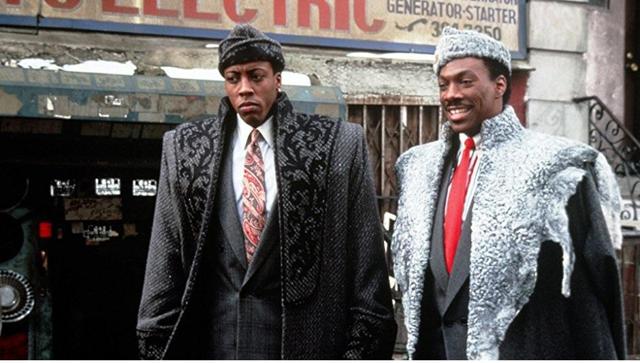With interest rates rising, income-seeking investors have more options to choose from as bank CDs and government bonds are paying more now than they have in years. In fact, with many one-year CD's yielding more than 2%, investors can collect a bigger income stream with a lot less risk than they could from the average stock in the S&P 500, which currently yields 1.8%. However, for those seeking more income, and willing to take on some additional risk, there are several compelling high-yield options out there.
Four that stand out are Crestwood Equity Partners (NYSE:CEQP), TerraForm Power (NASDAQ:TERP), Brookfield Infrastructure Partners (NYSE:BIP), and W.P. Carey (NYSE:WPC). Not only does each currently offer more than double the yield of the average bank CD and stock in the S&P, but those income streams are likely to grow in the coming years.

Image source: Getty Images.
A high yield for a value priceCrestwood Equity Partners operates oil and gas pipelines as well as related infrastructure, which energy companies pay fees to use so that they can transport, process, and store their production. The company's fee-based business model provides it with a relatively steady income stream, the bulk of which it distributes to investors via a payout that right now yields an eye-popping 7.6%.
That attractive income stream is only part of Crestwood's draw. That's because the company has several expansion projects underway that will begin to materially increase cash flow later this year and into 2019, with it on pace to grow cash flow at a 15% compound annual rate through 2020. That near-term growth, when combined with�strong financials�and undervalued price, makes it an excellent option for investors seeking a high-yielding opportunity with ample upside.
Making green by going greenTerraForm Power also operates in the energy sector, though it owns wind farms and solar panels that generate renewable power. The company sells this electricity to end users under long-term contracts, collecting steady cash flow in the process, which it uses to support its 6.9%-yielding dividend.
As lucrative as that income stream is these days, it's only the beginning. That's because TerraForm Power is working on a multipronged growth strategy that should supply it with enough cash flow so that the company can increase its payout at a 5% to 8% annual rate over at least the next five years. That visible income growth makes TerraForm an ideal high-yield stock to own for the long haul.

Image source: Getty Images.
Boring businesses but great incomeBrookfield Infrastructure Partners operates ports, powerlines, pipelines, toll roads, and cell towers. While those aren't exactly the most exciting businesses to be in, these assets do generate very predictable cash flow that's mainly supported by long-term contracts. That money helps sustain Brookfield Infrastructure's 4.9%-yielding payout.
However, like the others on this list, Brookfield's current income stream is just the starting point. The company has several expansion projects in progress, which along with contract escalators and the embedded growth within its legacy assets should provide the cash flow to increase its payout at a 5% to 9% annual rate over the next several years. Meanwhile, Brookfield is also pursuing multiple acquisition opportunities�that could provide even more fuel for distribution growth in the coming years. That visible growth with upside makes Brookfield Infrastructure another great option for income seekers.�
The lazy way to be a landlordW.P. Carey is one of the largest owners of net lease real estate assets in the world, which are properties rented out to a single tenant that pays virtually all the building's expenses. Overall, the company owns nearly 900 properties that it has leased to more than 200 tenants on contracts that have an average remaining term of almost 10 years. These agreements provide a very stable revenue stream, the bulk of which is sent back to investors via a dividend that currently yields 6.2%
Since going public,�W.P. Carey has increased its dividend every year by using its retained cash flow and balance sheet strength to build and buy additional properties that increase cash flow. With ample financial firepower to continue expanding, it should be able to keep raising its payout each year. That makes it a great investment option for investors who want to earn some passive income from real estate without having to be a landlord.
Income with upsideWhat makes this quartet of high-yield stocks worth buying isn't just their well-above-average yields but the fact that each one appears poised to increase those payouts in the years to come. That growth potential should enable these stocks to provide investors with a lucrative income stream along with some capital gains. This higher potential reward makes the added risk well worth it in my opinion.
� Equities research analysts expect Paccar (NASDAQ:PCAR) to report earnings per share of $1.43 for the current fiscal quarter, Zacks Investment Research reports. Seven analysts have made estimates for Paccar’s earnings. The highest EPS estimate is $1.50 and the lowest is $1.39. Paccar reported earnings of $1.06 per share during the same quarter last year, which indicates a positive year over year growth rate of 34.9%. The business is scheduled to issue its next earnings report on Tuesday, July 24th.
Equities research analysts expect Paccar (NASDAQ:PCAR) to report earnings per share of $1.43 for the current fiscal quarter, Zacks Investment Research reports. Seven analysts have made estimates for Paccar’s earnings. The highest EPS estimate is $1.50 and the lowest is $1.39. Paccar reported earnings of $1.06 per share during the same quarter last year, which indicates a positive year over year growth rate of 34.9%. The business is scheduled to issue its next earnings report on Tuesday, July 24th.
